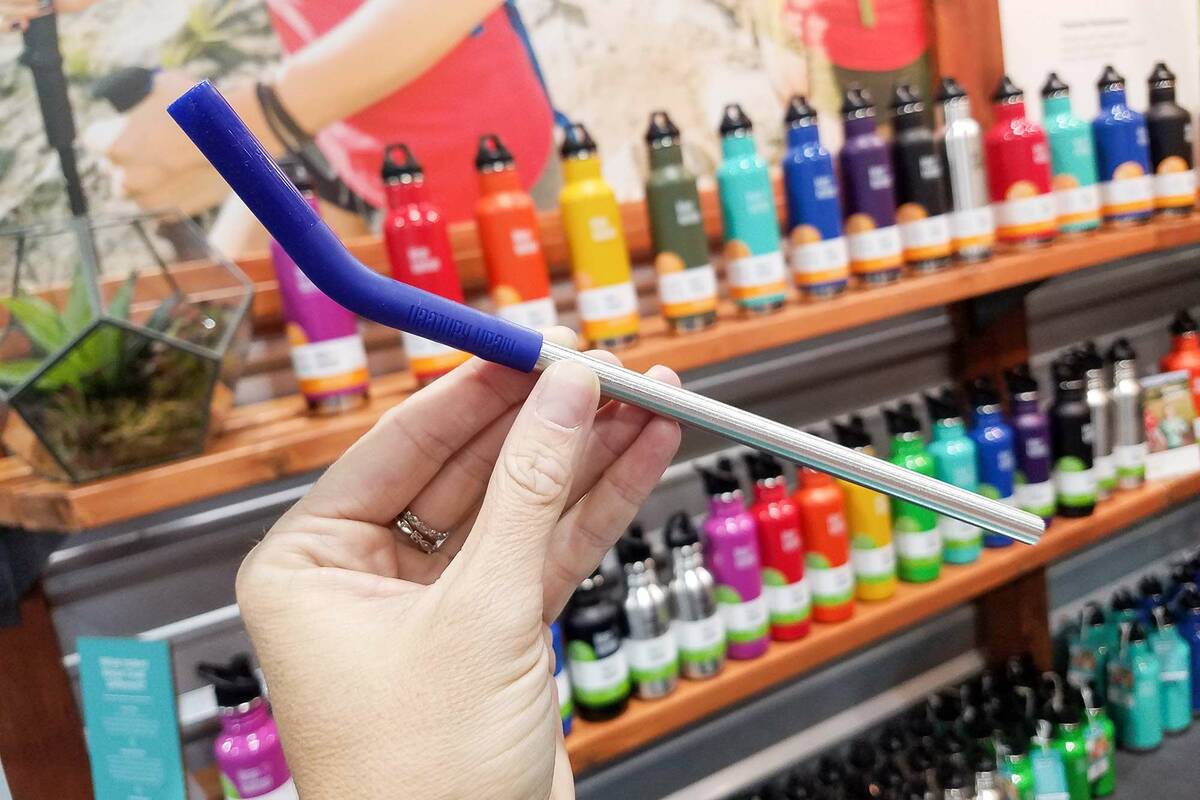Backpackers.com — Twice a year there’s a magical gathering that brings outdoor industry folks from across the world to a single event: Outdoor Retailer. We attended the Summer Market in July of 2018 and got some keen insights into the new fancy gear, but more importantly we looked for insights as to how the industry is shaking up environmental policies and perceptions through products and actions.
After many meetings and a sack full of free swag, I had a thought — a secret, somewhat shameful thought: If all these companies are working to reduce their impact, why don’t they literally stop making an impact? Why make any gear at all?

A great way to help the environment, no? Taken at Outdoor Retailer Summer Market 2018.
I find playing devil’s advocate a healthy practice, so how does the outdoor industry continue to blossom into the $887 billion (and growing) force of outdoor recreation, while also striving for sustainability? What about less is more?
The most obvious answer: money.
While money is at the root of all for-profit companies, which describes almost every gear manufacturer we know of, the outdoor industry is doing something that not many other industries do: getting people off their butts and into the great outdoors. The innate desire for humans to seek nature can be called biophilia. People getting outside and into the natural elements is a scientifically proven method of boosting happiness, reducing stress, and improving spatial memory. Spending time outside works miracles for developing children and stagnant adults, alike.
The Outdoor Industry Association, an organization that allows industry members to give voice to sustainable business and conservation (among other pursuits), shared an idea at the convention that helped me rationalize the quantity of stuff that gets produced — everyone deserves to get outside. This notion has helped them shape tackle key issues like accessibility, transportation, and diversity. This movement — of sustainability and true accessibility — is the foundation for other companies, specifically those that create gear and therefore have deep pockets, to stand on.
One of the most tangible realizations of this OIA platform is that nearly 75% of outdoor brands have at least one employee who is responsible for sustainability and environmental insights as of 2018. Brands are taking a more thoughtful approach with product development, addressing needs of their consumers that go beyond practicality. For example, Hydro Flask, after an in-depth market survey, will be launching products with calming color palettes, in response to their customers feeling like the world is in turmoil. Does this sell more water bottles? Yes. Does it assuage the emotional state of outdoor folks while saving our landfills from endless plastic bottles? Yes.
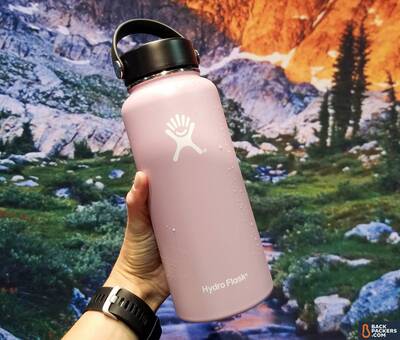
The new softer color palette from Hydro Flask is enticing. So is a reusable water bottle that cuts down on plastic waste.
So, how do you fit in? How do we, as conscious consumers, maintain an outdoor gear closet while putting our greenest foot forward? Read six ways to protect the environment while supporting sustainable brands below.
1. Thrift store gear
Buying second-hand gear is a cost effective, planet-positive move in two ways: It cuts back on sending stuff to the landfill, and reduces the overall demand for new gear. Companies will keep popping out new gear at a blister-fast pace, but over the long arc of time if consumers demand less clothing due to thrifting, companies will produce less.
How do you decide if thrifting for gear, or buying new, is the best choice? We will let your conscious decide, and advocate that it does not hurt to check out second-hand stores for gear that can withstand a couple owners (snow pants, backpacks, and coolers). If anything, you will often find older, high quality gear that needs a new home at the fraction of the price. Yes, I am talking to you, rugged USA-made Columbia snow jacket from the early 90’s found in a Colorado thrift store for $8.
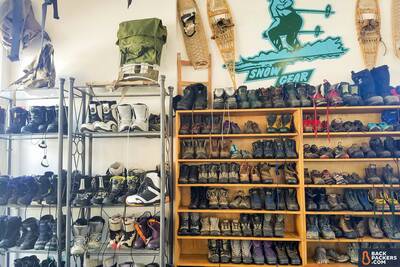
Not quite a thrift store, this second-hand outdoor gear shop, 2nd Base Gear Seattle, likely has a semi-worn pair of boots to fit you. Consider second-hand before buying new!
Beyond the local thrift store, you can check out these sites that host a heap of less expensive, used gear: Gear Trade, REI Used, and Patagonia’s Worn Wear.
Pro Tip: When traveling to outdoorsy towns, you can often luck out and find second-hand gear shops that people sell to (or donate to) after their adventuring.
2. Vote
As ambassadors of the outdoors we believe grabbing the reins of the democratic process and putting forth your opinion as a conscious citizen is important. Local elections are a great start to contributing your voice in the pursuit of preserving and enhancing natural spaces of all kinds.
Voting has never been more accessible or important. Many organizations and brands (including some of your favorite outdoor brands like Keen, REI, and The North Face) are using their business presences to take a stand, collect signatures, and even help people register to vote.
While at the Outdoor Retailer conference breakfast, OIA passed out signature cards to collect names in support of congress granting the Land and Water Conservation Fund full funding to continue preserving the lands that over 142 million Americans enjoy. This is just one example of the industry encouraging participation in the political process, of which there are many.
3. Ditch one-time-use products
One of the simplest conservation hacks you can make in your eco-game is purchasing reusable gear, therefore replacing items that would typically wind up in the landfill. There are many one-time-use items in your daily and trail life, such as plastic eating utensils, food storage bags, napkins, and water bottles.
If you do not have a reusable water bottle, get one. Did you know it takes 450 to infinity years for a standard plastic water bottle to decompose?! These bottles are swarming our oceans, releasing toxins and plastics into our natural habitats, impacting food supply and public health. Shameless plug: let us help you pick one from our favorite water bottles article. This is super basic, and easy to do. Ditch the plastic.
The next step is to assess your sucking game: Are you still using plastic straws? These plastic buggers are nearly impossible to recycle and wreak havoc on ecosystems for hundreds of years after that one-time-use at the coffee shop. There are multiple options for upping your strawless games, such as glass or metal straws, or even opting to remove the lid of your drink before a sip (revolutionary!).
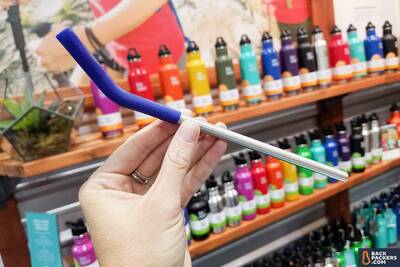
Klean Kanteen's reusable straws are literally flying off the shelves. Get one and keep it with you.
We were impressed with Klean Kanteen’s stainless steel silicone tipped straws. For years the company has reduced one-time-use trash by producing practical, durable drinkware (hint hint), as well a high-quality environmentally-safe bottle coating, Klean Coat. But these straws, which are fairly new, come in a pack of four and can be found at Target, REI, and Whole Foods for a retail value at about $10 (if you can find them on the shelves). We spoke to Klean Kanteen about the popularity of the multi-use straws — the company has had to open a second production facility to meet demand.
Finally, those one-time-use bags, usually Ziplocs. You can use them more than once, but they’re still plastic, and won’t last more than a few dozen washes. Consider switching to a silicon-based product, like Stasher, which allows for endless wash cycles.
Yes, all of these reusable items are more money up front, but if you have to buy a water bottle once, rather than every time you go to the store, you will save in the long run. And the planet saves right away.
Pro Tip: We suggest storing the straws in a Stasher or old sunglass case to prevent post-smoothie straw leakage in your bag, and cleaning them with a good old fashioned pipe cleaner.
4. Pick up the trash you see!
It is no secret that picking up your own litter is good for reducing harm on wildlife and the planet at large. As outdoor ambassadors we have to lead by example — pick up trash, people!
The problem with litter is that it’s easy to dismiss as “someone else's problem”, avoiding responsibility because it was simply not yours to begin with. While we understand the gripe, we see it like this: imagine you share the outdoors with a million other roommates. We all know that when you live with other people you inevitably have to pick up after them (doggie bags and all!). It’s not glamorous, but nature deserves the extra effort.
There are brands activating the “adventure without a trace” movement because this simplistic act is part of the bigger picture: keeping nature as is. Granite Gear, inspired by and partnered with Packing It Out, sponsors hikers on trails across the country through the Groundskeepers program, supporting the initiative to remove thousands of pounds of trash from the trails across the US.
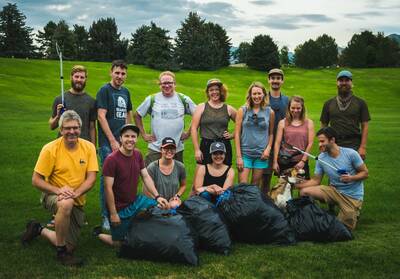
Packing It Out, Granite Gear, and Gear Junkie team up to remove trash from a park in Salt Lake City.
Leave No Trace is more than a lifestyle, it’s an organization advocating conservation-based adventuring. In addition to packing-it-out, LNT encourages campers to be prepared, minimize campfire damage, and to not mess with wildlife (please don’t feed the squirrels!). They are partnered with brands such as L.L Bean, Subaru, Eno, and Thule — all for-profit companies whose work here is literally helping to keep our increasingly impacted nature areas clean.
Pro Tip: Bring an extra plastic bag (even better, a Stasher) when you hit the trail. Our writers do this on a regular basis in case they come across litter. Pick up a few things on any walk, and you have done good. True story: I found a working GoPro while picking up tourists’ trash at the beach during a run (talk about karmic turnaround).
5. Volunteer
Buying reusable water bottles and thrifting are low hanging fruit on the “actions to save the planet” tree, but do not let that discount their value. When you feel like putting in a little extra effort and giving back in a new way: volunteer!
Patagonia launched the Action Works campaign in 2017, a database of local and national volunteering opportunities. There is a wide variety of roles one can volunteer for, many of which go way beyond joining a trash pick-up event. People can apply their professional skills and consult with agencies looking for assistance with business strategies, content curation, or marketing materials. It’s simple to set up a profile and navigate the wide range of ways to get involved.
To put it on a larger scale, the Sierra Club, an activist grassroots organization with national acclaim, has been successfully raising funds, collecting signatures, and shifting policies since John Muir launched the organization in 1892. Many of their efforts are focused on eliminating deleterious energy sources (like coal) in order to preserve natural land.
The reality of volunteering, or donating, is that your dollars and time have an actual ROI when it comes to participating in policy change and activism!
6. Buy products that use less resources
If you’re set on buying new gear (we don’t blame you) there is one final approach to consider. Just like asking if a meal is sourced organically or humanely, consumers can check the eco-cred of the clothing they buy.
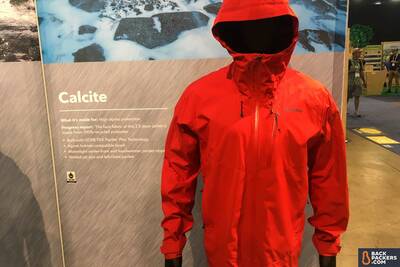
Patagonia's Calcite jacket is the first to use a recyclable waterproof membrane from Gore-Tex.
Patagonia has led the way in this field, creating now-standard practices in “ethical” outdoor gear, including methods of manufacturing and the quality and resourcing of materials. Look for gear with these qualities attached:
- Fair Trade Sewing
- bluesign
- Responsible Down Standard (and other down tracing programs)
- A percentage of recycled materials
Recycling, in particular, has become what we think is the biggest push in the outdoor industry. There are entire brands built on products made from recycled materials, like the Suga yoga mat, Bureo skateboards, or Indosole shoes. Then there are recycling programs, like SOLE’s ReCork program, which has recycled over 70 million wine bottle corks into shoes and insoles.
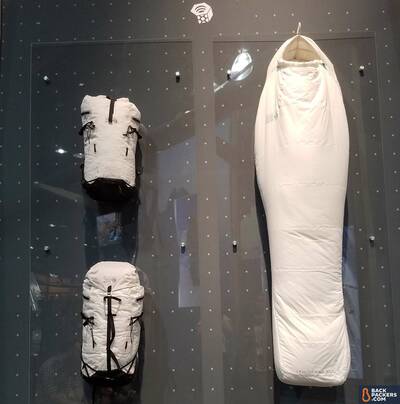
Mountain Hardwear is making a push toward sustainability – the Eco AF line is one example. The undyed process can save around 10 liters of water per yard of fabric.
We saw a lot of new, cool eco-chic products at the show, and then there are some classic campaigns. Check these out if new products sourced with the environment in mind is your jam:
- Columbia’s Outdry Extreme ECO line saves over 24 gallons of water with a dyeless process and is made from entirely recycled products.
- Patagonia’s soon-to-be-released Calcite rain jacket uses the first recycled Gore-Tex waterproof membrane, called Paclite PLUS. Waterproof breathable membranes are a notoriously “dirty” process of manufacturing.
- LifeStraw’s program makes it so that for every product you purchase, a school child receives safe water for an entire school year. The new Flex is one of our preferred styles of on-the-go water filtration.
- Mountain Hardwear’s going big on sustainability with their major product campaigns for Spring 2019 using sustainable processes. This includes the Exposure/2 rain jacket series, which uses solution dying, 100% recycled bluesign approved fabrics, and PFC-Free (C0) durable water repellents. The company also has an “Eco” line, which restrains from using die. The Lamina Eco AF saves 80 liters of water per bag, according to their production mill.
- The North Face took 160,000 pounds of plastic out of National Parks in the U.S., and made a cool collection of clothes with it.
Companies may be using the environmental angle to sell stuff, but that’s a form of progression and we will take it. Just as much as it is their responsibility, reducing our own impact on nature is up to us.
Giveaway
- The North Face Bottle Source Pullover Hoodie
- Klean Kanteen Stain Steel Straws (2)
- Lifestraw Universal Water Filter
- Hydro Flask 32 oz. Flex Lid Bottle
- Granite Gear 16L Tough Sack
- Backpackers.com Adventurer Badge (2)
Affiliate Policy: We support the hours that go into our reviews and testing through affiliate commissions on purchases made through links in this article. These don't effect the outcome of our reviews or selection of gear.
